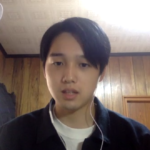Hiroshima Report 2018(4) COOPERATION WITH THE IAEA
One of the most important measures to strengthen the effectiveness of the IAEA safeguards system is to promote the universal application of the Additional Protocol. Among the countries surveyed in this project, Australia, Austria, Belgium, Canada, Chile, France, Germany, Indonesia, Japan, South Korea, Mexico, the Netherlands, New Zealand, Nigeria, Norway, the Philippines, Poland, Sweden, Switzerland, Turkey, UAE, the United Kingdom and the United States consider that the Additional Protocol is “an integral part” of the current IAEA safeguards system.45
Other countries, including Brazil, consider that the conclusion of an Additional Protocol should be voluntary, not obligatory, although they acknowledge the importance of the Additional Protocol with regard to safeguards, as a major component of the safeguarding element of the nuclear non-proliferation regime.46 In the meantime, while arguing that acceptance of the Additional Protocol is a voluntary measure, South Africa nonetheless regards it as an indispensable instrument to enable the IAEA to provide credible assurances regarding the absence of undeclared nuclear material and activities in a State;47 and Russia called upon the countries that had not yet done so, to conclude as soon as possible the Additional Protocol.48 The NAM countries argue that “it is fundamental to make a clear distinction between legal obligations and voluntary confidence-building measures and that such voluntary undertakings shall not be turned into legal safeguards obligations.”49 In addition, Sweden proposed to stipulate an obligation of concluding an Additional Protocol in the Treaty on the Prohibition of Nuclear Weapons during its negotiations. However, this proposal was rejected.
In the resolution titled “Strengthening the Effectiveness and Improving the Efficiency of Agency Safeguards,” adopted at the IAEA General Conference in 2017, the following points were stated, based on divergent views regarding additional protocols:50
- “Bearing in mind that it is the sovereign decision of any State to conclude an additional protocol, but once in force, the additional protocol is a legal obligation, encourages all States which have not yet done so to conclude and to bring into force additional protocols as soon as possible and to implement them provisionally pending their entry into force in conformity with their national legislation.”
- “Notes that, in the case of a State with a comprehensive safeguards agreement supplemented by an additional protocol in force, these measures represent the enhanced verification standard for that State.”
The IAEA has contemplated a state-level concept (SLC), in which the Agency considers a broad range of information about a country’s nuclear capabilities and tailors its safeguards activities in each country accordingly, so as to make IAEA safeguards more effective and efficient. In the resolution titled “Strengthening the Effectiveness and Improving the Efficiency of Agency Safeguards,” adopted at the IAEA General Conference in 2017, important assurances about the SLC mentioned below were welcomed:51
- The SLC does not, and will not, entail the introduction of any additional rights or obligations on the part of either States or the Agency, nor does it involve any modification in the interpretation of existing rights and obligations;
- The SLC is applicable to all States, but strictly within the scope of each individual State’s safeguards agreement(s);
- The SLC is not a substitute for the Additional Protocol and is not designed as a means for the Agency to obtain from a State without an Additional Protocol the information and access provided for in the Additional Protocol;
- The development and implementation of Statelevel approaches requires close consultation with the State and/or regional authority, particularly in the implementation of in-field safeguards measures; and
- Safeguards-relevant information is only used for the purpose of safeguards implementation pursuant to the safeguards agreement in force with a particular State—and not beyond it.
In its Annual Report 2016, the IAEA reported: “During 2016, the Agency completed updating Statelevel safeguards approaches for the remaining States in the original group of 53 States that were already under integrated safeguards at the start of 2015. In addition, it developed State-level safeguards approaches for: eight States with a CSA and an AP in force and a broader conclusion; two States with a CSA and AP in force but without a broader conclusion; and one State with a voluntary offer agreement and an AP in force.”52 Regarding research and development of safeguards technologies, under its long-term plan,53 the IAEA conducted the “Development and Implementation Support Programme for Nuclear Verification 2016- 2017,”54 in which 20 countries (including Australia, Belgium, Brazil, Canada, China, France, Germany, Japan, South Korea, the Netherlands, Russia, South Africa, Sweden, the United Kingdom and the United States) and the European Commission (EC) participated.
[45] See statements addressed by respective countries at the IAEA General Conferences and the NPT Review Conference.
[46] “Statement by Brazil,” Cluster 2, First Session of the Preparatory Committee for the 2020 NPT Review Conference, May 8, 2017.
[47] “Statement by South Africa,” General Debate, First Session of the Preparatory Committee for the 2020 NPT Review Conference, May 3, 2017.
[48] “Statement by Russia,” Cluster 2, First Session of the Preparatory Committee for the 2020 NPT Review Conference, May 8, 2017.
[49] NPT/CONF.2020/PC.I/WP.21, April 20, 2017.
[50] GC(61)/RES/12, September 21, 2017.
[51] Ibid.
[52] IAEA Annual Report 2016, September 2017, p. 96.
[53] IAEA, “IAEA Department of Safeguards Long-Term R&D Plan, 2012-2023,” January 2013.
[54] IAEA, “Development and Implementation Support Programme for Nuclear Verification 2016-2017.”








